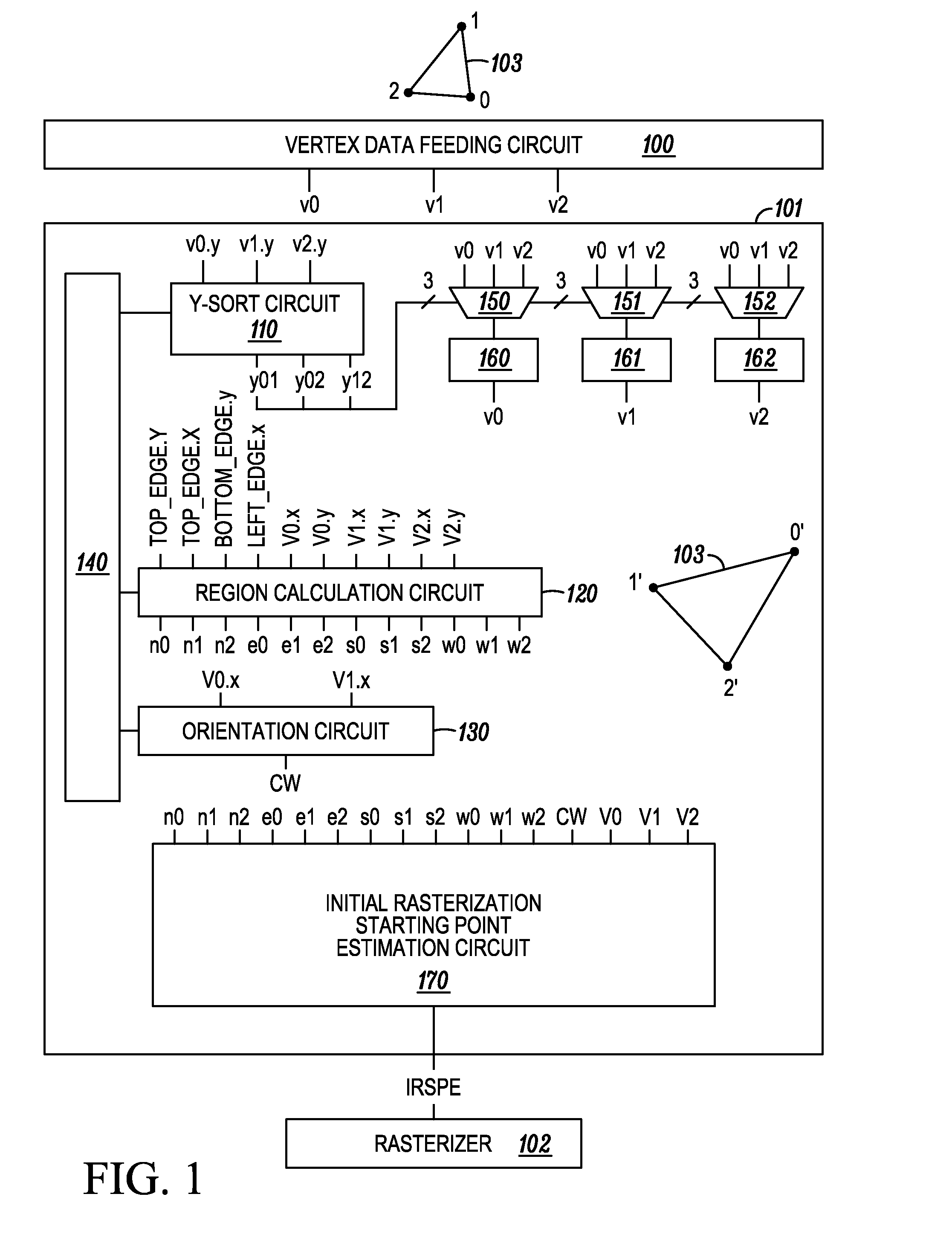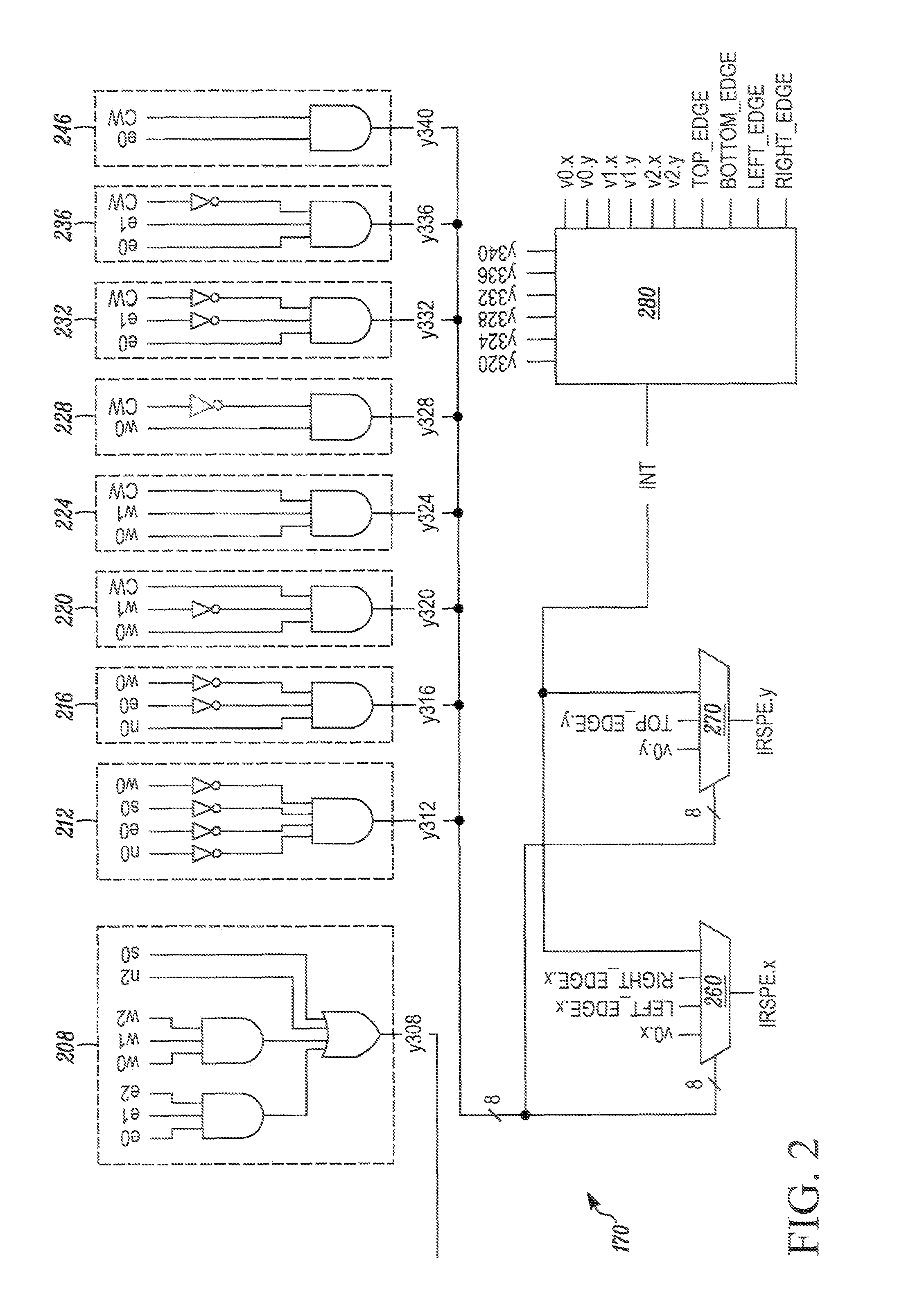Optimal initial rasterization starting point
- Summary
- Abstract
- Description
- Claims
- Application Information
AI Technical Summary
Benefits of technology
Problems solved by technology
Method used
Image
Examples
Embodiment Construction
[0021]In this description, the same or similar elements in different drawings are identified with the same reference symbols. In this description, “&” means logical AND, “+” means logical OR, and “!” means logical NOT. Items within parentheses “( )” have highest logical priority followed by “!”, “&”, and “+”, in descending priority order.
[0022]A frame buffer (not shown) may be divided into tiles of, for example, 32 by 32 pixels. Triangles (and portions thereof) that are within a given tile are rasterized one triangle at a time into the tile location. This process repeats for each tile in the image frame. For graphics applications, this process repeats for each image frame in the graphics stream.
[0023]FIG. 1 shows a setup engine 101 that receives triangle vertex data v0, v1 and v2 from a vertex data feeding circuit 100, and provides data including an initial rasterization starting point estimate (“IRSPE”) to a rasterizer 102. Although the vertex data v0, v1 and v2 are shown transmitt...
PUM
 Login to View More
Login to View More Abstract
Description
Claims
Application Information
 Login to View More
Login to View More - R&D
- Intellectual Property
- Life Sciences
- Materials
- Tech Scout
- Unparalleled Data Quality
- Higher Quality Content
- 60% Fewer Hallucinations
Browse by: Latest US Patents, China's latest patents, Technical Efficacy Thesaurus, Application Domain, Technology Topic, Popular Technical Reports.
© 2025 PatSnap. All rights reserved.Legal|Privacy policy|Modern Slavery Act Transparency Statement|Sitemap|About US| Contact US: help@patsnap.com



